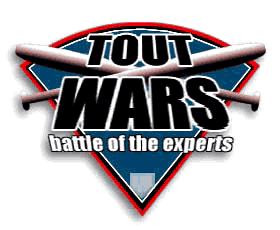We obsess about Saves and Steals. The Closers chart is a staple of fantasy baseball sites, and while no one lusts after one-dimensional speed guys, like Rajai Davis, our special roto-sense keeps us on the lookout for these hidden gems who can help us make a move in steals.
But how much should you pay for Steals and Saves?
In a recent look at FAAB and the categories, the amount of stolen bases added to teams after the draft wasn’t too much different than the number of home runs or runs batted in. The amount of saves wasn’t too much different than the number of strikeouts and wins.
If the amount of available supply is roughly similar, and the category itself earns the same amount of points as the other categories, you would think the value would be the same. And when we look at after-season values I’m pretty sure it is. But if you calculate regular post-season values and compare them to what fantasy owners pay in the auction, they don’t come close.
A closer who saves 50 games with good ERA and Ratio might earn $35 in the after-season values, but in the auction teams won’t pay more than $24.
The same goes for a .265 hitter who steals 37 bases in 410 at bats. Post season he’s a $20 player, but in the auction his price is more like $15. Why is this?
What I found over the years is that we pay only 50 cents on the dollar for the expected saves and steals of most players, particularly those who don’t contribute much in the way of homers and strikeouts.
My discounting Saves and Steals was not random. It came about iteratively, after much trial and error. This isn’t as neat as a formula, but I think it well represents the process of finding out how these things work.
My basic process was, at first, to value these cats as all the other categories, which meant that the few guys with high steals and high saves totals were the most valuable players in the game. Initially, I stuck stubbornly to those numbers because the math was certainly right, but it became clear that if people who played the game weren’t paying for all those steals and saves it was a mistake to value them the same way as other categories when analyzing how people play.
That’s when I started knocking the prices down. I used to have an arcane formula that diminished the category value depending on how much a player’s production would exceed that of the average player. But this led to the unseemly conclusion that Ricky Henderson’s 61st steal was somehow worth less than Paul O’Neill’s 11th, which violates the principle that a stat is a stat.
When I eventually got to a 50 percent value for steals and saves of the value of each of the other four categories, the earned prices started aligning with what fantasy owners were paying for them. That’s what interests me, what I think is of most analytical value, and by virtue of the smell test I’m confident that as a general principle this is right.
But I don’t have a formula to explain it. Maybe there is one out there, but I don’t have access to it. What I’m sure of is that the notion that you can buy excess stats in a league with liquidity is a canard. It really doesn’t matter if any individual player gives you too many, because at some point you can swap him.
The market dynamic that matters in this instance of individual players generating large proportions of a single stat is not that teams can buy guys who steal lots of the bases a team needs or gets the saves a team would like, but that teams can choose not to buy base stealers and game savers and instead spend their money on power hitters and strikeout pitchers. This asymmetry (you can readily play without Saves or Steals, but it is very difficult to play without HR and RBI or Strikeouts) means that the option of dumping steals and saves is always there.
Even if no team dumps on draft day, by midseason a quarter of teams in the average league will have traded away their steals and saves guys (not always the same team, of course) for assets in the power hitting and pitching categories.
I’m not saying that the discounted price represents the real value to the team. Having a guy who steals 65 bases may cost you $17 in the auction, for whatever reason, but when he actually steals the 65 bases he may earn $34 for doing so.
What I’m saying is that this is the way the market works. We’re all slaves to the market, until we figure out how to master it (if it can actually be mastered). In this case mastering it some small bit means not paying too much for steals and saves, not because you might overbuy (though you should know enough not to do that), but because other people may not buy at all.



Pingback: Some Category Valuation Observations for Roto Pricing | Rotoman's Guide